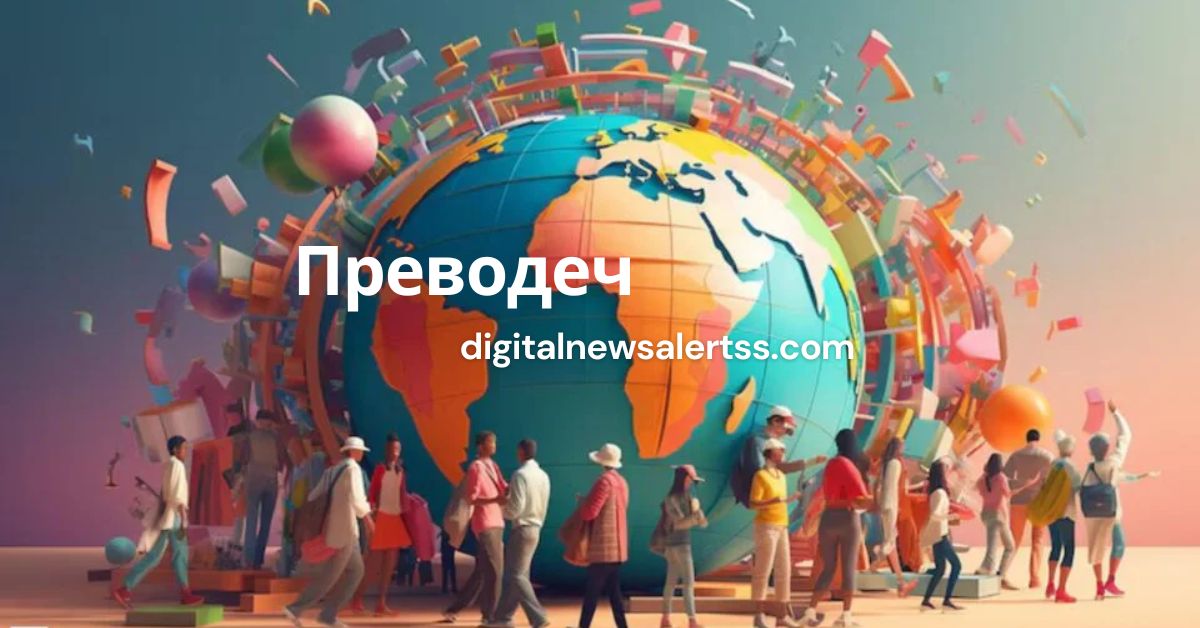Translation, or as it is known in Bulgarian, “Преводеч,” is the process of converting text or speech from one language into another. It may sound simple on the surface, but translation is far more complex and intricate than most people realize. In a world that is becoming more globalized, translation bridges cultural and linguistic gaps, making it a crucial tool for communication. This article will explore the deep importance of translation, how it works, its challenges, and why Преводеч is essential for people, especially in the United States.
What is Преводеч?
Преводеч is the Bulgarian word for translation. It involves more than just swapping words from one language to another; it is about conveying meaning, tone, and context accurately. A good translation preserves the intent and emotion of the original text while making sure it is understandable to a new audience. This requires a deep understanding of both the source language (the language being translated from) and the target language (the language being translated to).
Brief History of Translation
Translation has a long history, going back thousands of years to ancient civilizations. In ancient Mesopotamia, translators were highly respected because they could communicate between different cultures. Ancient Rome and Greece also valued translators who helped spread their literature and ideas across Europe. Religious texts like the Bible and Quran were among the earliest works to be translated widely, spreading religious beliefs across different regions and cultures.
With the rise of international trade and globalization, translation became more important than ever. Modern translation tools and technologies, such as translation software and artificial intelligence, have made the process faster, but the need for human insight and understanding remains vital in accurate translation.
How Does Преводеч Work?
Преводеч (translation) involves multiple steps:
- Understanding the Source Text: The first step is to fully understand the original text, its meaning, context, and tone. Without understanding, it’s impossible to convey the message properly.
- Selecting Equivalent Words and Phrases: This step is where the actual “translation” happens. The translator must find words and phrases in the target language that express the same meaning as the source text.
- Maintaining Context and Cultural Relevance: A word-for-word translation can miss the true meaning of the original text, especially if cultural references or idiomatic expressions are involved. A skilled translator ensures the translated text makes sense in the cultural context of the audience.
- Proofreading and Editing: Once the translation is done, it needs to be reviewed to ensure accuracy. This involves checking for mistakes in grammar, tone, and meaning.
Why is Преводеч Important?
Преводеч is important because it helps people connect across language barriers. In the United States, a country with a large immigrant population, translation services play a critical role in helping individuals access education, healthcare, legal services, and more. Whether it’s translating official documents, medical information, or even day-to-day communications, Преводеч enables people to understand each other better.
Moreover, businesses rely on translation to enter new markets, reach a wider audience, and communicate effectively with clients from different cultural backgrounds. Without translation, it would be nearly impossible for companies to operate globally.
Challenges in Преводеч
Translation comes with several challenges. These include:
- Cultural Nuances: Certain phrases or ideas in one language may not have direct equivalents in another. For example, idiomatic expressions often lose their meaning when translated literally.
- Ambiguity: Words that have multiple meanings in one language can create confusion if not properly translated.
- Maintaining Tone and Style: Some texts, such as legal documents, need to maintain a formal tone, while others, such as marketing materials, may need to be more casual or persuasive. Translators must adapt the tone appropriately.
- Technical Jargon: Specialized industries, such as medicine, law, or technology, have their own terminologies, which require expert knowledge to translate accurately.
Types of Translation
There are several types of translation depending on the field and purpose. These include:
- Literary Translation: This involves translating works of literature like novels, poems, and plays. Literary translation is particularly challenging because it requires capturing not just the meaning, but the style, tone, and artistic qualities of the original work.
- Legal Translation: Translating legal documents such as contracts, court cases, and legislation requires precision and a deep understanding of legal terminology in both languages.
- Medical Translation: Healthcare documents, patient information, medical research papers, and pharmaceutical instructions need accurate and clear translations to avoid miscommunication.
- Technical Translation: Manuals, guides, and documents in industries like engineering, IT, and manufacturing require specialized knowledge of technical terms.
- Business Translation: Companies expanding globally need to translate marketing materials, business proposals, contracts, and communication to appeal to new markets.
The Role of Technology in Преводеч
Technology has greatly enhanced the translation process. Tools like Google Translate or machine learning-based translation software can quickly convert text into another language. However, they are not always accurate, especially with complex or nuanced text.
Human translators are still essential because they can understand context, emotion, and cultural nuances in a way that machines cannot. Often, automated tools are used for initial translations, and human translators edit and refine the text to ensure it is correct and readable.
The Future of Преводеч
The future of translation is promising, as technological advancements like artificial intelligence continue to improve the speed and accuracy of translations. AI-powered translation tools are getting better at understanding context and providing more natural translations, but human oversight will always be necessary.
Globalization will continue to drive the demand for translation services. In the United States alone, with its growing immigrant populations and increasing diversity, the need for effective and accurate translations will only grow. The role of the translator will expand to not just converting words, but helping facilitate meaningful cross-cultural communication.
How to Get Started with Преводеч
For those interested in becoming translators, it’s important to have a strong grasp of both the source and target languages. Formal education in linguistics or translation can be beneficial, as well as specializing in areas like legal, medical, or technical translation.
Many translators start by freelancing, using online platforms to find work. Building a portfolio of translated works can help in securing long-term projects.
Benefits of Learning Multiple Languages
Being bilingual or multilingual has many benefits beyond just translation. Studies show that knowing multiple languages improves cognitive abilities, enhances memory, and makes it easier to learn new information. In the global job market, knowing more than one language can make you a valuable asset, especially in fields like international business, healthcare, and education.
Practical Applications of Преводеч in the United States
In the United States, translation plays a key role in industries like healthcare, law, education, and business. For example, hospitals need translation services to ensure that patients who speak different languages can understand their diagnoses, treatments, and prescriptions. Courts rely on legal translators to interpret documents and ensure all parties involved understand the legal proceedings.
For businesses, being able to offer services in multiple languages allows them to reach a wider customer base and improve customer satisfaction.
Conclusion
Преводеч, or translation, is not just about converting words from one language to another; it is a deeply intricate process that bridges cultures, ideas, and people. As the world continues to globalize, the need for skilled translators becomes more crucial. Whether in business, healthcare, law, or education, accurate and thoughtful translation allows for better communication and understanding.
If you’re considering a career in translation, now is an exciting time to start. With the growing demand for language services and the rise of new technologies, the field is expanding rapidly, offering numerous opportunities for those who can bridge linguistic divides.
FAQs about Преводеч
What does Преводеч mean?
Преводеч is the Bulgarian term for translation, which is the process of converting text or speech from one language to another.
Why is translation important?
Translation allows people from different linguistic backgrounds to communicate, share ideas, and access services, making it vital in today’s globalized world.
What challenges do translators face?
Translators must deal with cultural nuances, ambiguous words, maintaining the tone of the original text, and specialized jargon that may not have direct equivalents in the target language.
What are the different types of translation?
Some major types of translation include literary, legal, medical, technical, and business translation.
Can machines replace human translators?
While machine translation tools are improving, they cannot fully replace human translators due to their inability to understand context, cultural references, and emotional tone.
What industries rely on translation the most in the USA?
Healthcare, legal, education, and business industries in the United States rely heavily on translation services to cater to diverse populations.
How can I become a translator?
To become a translator, you should be fluent in at least two languages and may benefit from formal education or specialized training in translation. You can start by freelancing and building a portfolio of translated works.



